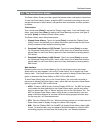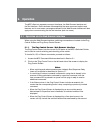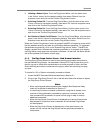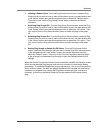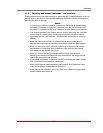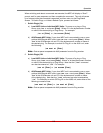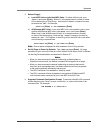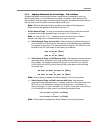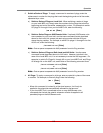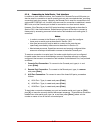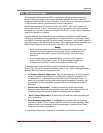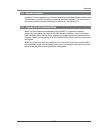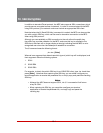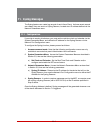
9-7
Operation
3. Reboot Plug(s):
a) Local MPC Units or Individual MPC Units: To initiate a Boot cycle, type
/BOOT n and press [Enter]. Where "n" is the alphanumeric number or name
of the desired plug or Plug Group. Note that the "/BOOT" command can also
be entered as "/BO". For example:
/BOOT B3 [Enter] or /BO ATMSWTCH [Enter]
b) AUX/Remote MPC Units: If your local MPC unit is connected to one or more
optional AUX/Remote MPC units, type /BOOT aux n and press [Enter].
Where "aux" is the AUX/Remote unit and "n" is the alphanumeric number
or name of the desired plug. Note that the “/BOOT” command can also be
entered as “/BO”. For Example, to boot Plug A4 on the AUX2 unit, enter either
of the following command lines:
/BOOT AUX2 A4 [Enter] or /BO AUX2 A4 [Enter]
Note: Enter a space to separate the AUX parameter from the Plug number.
4. Set All Plugs to Power Up Defaults: Type /DPL and press [Enter]. All plugs
permitted by your account will be set to their default On/Off status, which is defined
via the Plug Parameters Menu as described in Section 5.7.
Notes:
• When you have accessed command mode using an Administrator or
SuperUser level account, the Default command will be applied to all plugs.
• When you have accessed command mode using an account that permits
only User level command access, the Default command will only be applied
to the plugs specifically allowed by that account.
• The /DPL command is not available in ViewOnly mode.
• The /DPL command will also be applied to any optional AUX/Remote MPC
units that have been connected to your Local MPC unit's AUX Ports
5. Suppress Command Confirmation Prompt: To execute a Boot/On/Off command
without displaying the "Sure?" prompt, include the ",Y" option at the end of the
command line. For example:
/ON ROUTER,Y or /BOOT B2,Y




